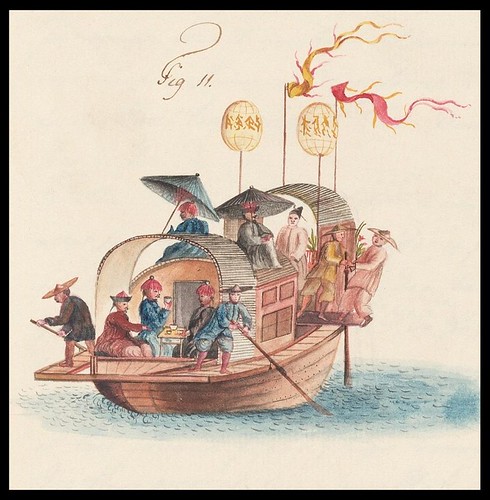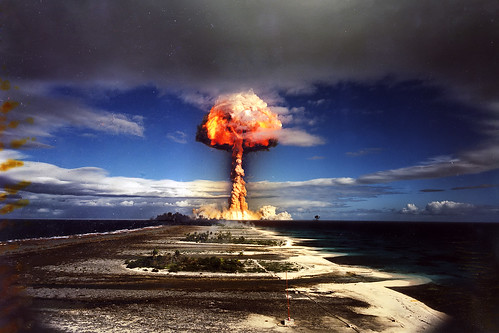This man's voice is the most boring lifeless sound produced in the human audible range, but this shit is awesome.
Friday, November 30, 2007
World's fastest elevator

If you aren't spooked by elevators, that might change if you take a ride in Taipei's Taipei 101 building. That's because it sports the fastest elevator in the world, shooting people up from the 5th floor to the 89th floor in a mere 37 seconds. That's fast.
It uses fancy-pants triple-stage anti-overshooting systems and high-tech emergency break systems to keep it safe, but that won't make your stomach drop any faster once it starts off on its rocket flight. I'd say taking the stairs is a better idea, but walking up 84 flights of stairs isn't anything I'd wish on anybody. I guess my advice is to avoid the Taipei 101 building if you can.this device is a thick as a PENCIL

Go here: Amazon product page and description
Amazon officially announced its Kindle ebook reader. Contrary to what we previously reported, the Kindle is notWi-Fi compatible. Instead, it's on its own EV-DO network, called Whispernet, which is affiliated with Sprint. Unlike any other EV-DO device we've ever heard of, the Kindle has no monthly fee. That doesn't make the Kindle a replacement tablet computer or Blackberry, however. The EVDO network is to be used pretty much exclusively for downloading books, newspaper and magazine content, and RSS feeds. It has a browser, but only a very basic one.
The Kindle's major competition right now is Sony's Digital eBook Reader. That device doesn't connect to the Internet at all, but converts Word documents into readable files for free (the Kindle will charge $.10 per document emailed), and makes it easy for you to read any pdf file. The Kindle is geared much more towards customers who want to buy books from Kindle's Amazon store, which has 90,000 books already, all under $10. Unlike with iTunes, any book that you download from Amazon onto the device is stored permanently on Amazon, in case your Kindle ever crashes. The Kindle costs $400, weighs 10.3 ounces, and is available now.

This fake window goes by the name of Bright Blind and is the work of two Japanese designers. Electroluminescent sheets provide the backlighting and simulated daylight. Like real windows and shades, the twisty plastic bar (what is the official name of that thing anyway?) controls the amount of light emitted. Click below to see a video of the conceptual Bright Blind in action. —
please.

Got a steep hill nearby? You need this Alu High-Tech Sled, crafted of feather-light, corrosion-resistant aluminum and equipped with shock absorbers to keep that ride smooth and your back unbroken. Underneath are 2-inch-wide plastic runners that are perfect for waxing, just like your fastest skis. Once you've finished your lightning-fast downhill run, there's even a handbrake, keeping you from ending up in places you'd rather not go.
When winter is over, you'll be glad to know this high-tech sport sled folds nearly flat, to a height of less than 7 inches. That ought to fit into the most cramped of closets or basements during the majority of the year while the sled awaits its next season of rip-roaring fun. Equipped to carry even a 220-pound bruiser, it'll cost you a serious $636.Thursday, November 29, 2007

http://www.lvzhongfang.com/concept/tiwe/tiwe-a.htm
monkeys, brains, legs, labs
With the ultimate aim of allowing paralysed people to walk again, a team at Duke University in Durham implanted electrodes in the brains of two rhesus macaques and analysed the electrical signals that drive their legs. The team then mapped the signals to specific leg movements and, via the internet, used them to control a pair of robot legs at the Advanced Telecommunications Research Institute International in Kyoto.
The team, which presented its work at Neuroscience 2007 in San Diego, California, hopes the technique will one day allow paralysed people to control prosthetic legs via brain implants.
Tuesday, November 27, 2007
Friday, November 16, 2007
Thursday, November 15, 2007
The Las Vegas New Frontier hotel blown up in spectacular fashion
Bury yourself at sea in style

I don't expect a lot of visitors if I ever end up at the Neptune Memorial Reef , but since I'll be dead let's assume that I won't notice. The Reef is an underwater graveyard for cremated remains, made to look like an ancient lost city.
It's a little out of the way — three miles off the Miami Coast in 45 feet of clear water. The reef will cover 16 acres of ocean floor with room for 125,000 remains. The Neptune Society hopes it will attract those looking for a final resting place and the occasional tourist diver. Over time, this underwater memorial city is supposed to become a living reef with colorful marine life and coral growth.Wednesday, November 14, 2007
Tuesday, November 13, 2007
Friday, November 9, 2007

This chair is created by heating and pressing a seat-shaped former into a ball of clear PVC hose. The hose begins to melt as it comes into contact with the heated former and, due to prolonged exposure to the heat it starts to burn. Once cooled the surface of the seat looks charred and brittle but is surprisingly flexible and comfortable to sit on.
This forms part of a series of chairs created using the same technique with different materials.
Thursday, November 8, 2007
Gigabyte Visuals USB gauge keeps an eye on your machine


The Swedish East India Company was formed under Royal Charter in 1731 and granted exclusive national trading rights with Asia, mostly through the port of Canton ( near Hong Kong). Round-trip voyages from the company's headquarters in Göteborg took around eighteen months and the major commodities transported back were tea, silk, porcelain and spices.
In all, there were 127 voyages undertaken prior to the company's becoming insolvent in 1813 due to reduced profits during the Napoleonic years. Eight major sailing vessels were either lost or partially destroyed while the company was operating, including the 'Götheborg', which famously sank on return to the harbour in Göteborg in 1745. In the 1990s, marine archaeologists were able to salvage some of the original ship, and after a ten year rebuilding project, a to-scale replica undertook a nineteen month voyage from Sweden to China and back, returning to Göteborg in June 2007.
The images above come from the diary of a cartographer (Carl Johan Gethe) on board the 'Götha Leyon', which left Sweden on a three year trading expedition in 1746. There is very little I can find about this particular voyage saving to note that a pupil of Carolus Linneaus, Carl Gustav Ekberg*, was the Ship's Surgeon and functioned as an amateur naturalist. One of the maps seen above is of the port of Cadiz in Spain, where ships stopped to trade merchandise for Spanish silver coins which they then used to purchase goods in China.
Gethe's diary ('Dagbok') (title: 'Dagbok hållen på resan till Ost Indien begynt den 18 octobr: 1746 och slutad den 20 juni 1749') is one of two diaries from crew members on the same voyage which are hosted by the National Library of Sweden. Although fairly similar, I think the quality of the watercolour sketches in Gethe's book is superior. The illustrations are elegant and beautifully colourful, if at times a little unsophisticated.


This is a scan of a (digitally restored) hardcopy of a picture taken by the French army which could be purchased in Tahiti at that time.
Wednesday, November 7, 2007
This office furniture is boombastic

The Eclipse Office Partitioning System is pretty much the ultimate cubicle. More than just a desk and chair, the bubble-like shade that encloses the Eclipse is actually packed with all sorts of high tech goodies. The shade itself can be projected onto and surround the worker with soothing images — a pleasant meadow, rippling waves, a view of Coruscant at night. It also functions in a way conducive to productivity, acting as a screen for teleconferencing. The bars supporting the shade also have uses, with embedded lights, video cameras and speakers.
The Eclispe Office Partitioning System is a concept by Marcus Ward Curran and, while it's very cool, you shouldn't get your hopes up on seeing one of these instead of the ol' cubicle walls waiting for you in the morning. Click through for additional pictures and a video of the different features in action. — Kevin Hall
Via Yanko Design





































